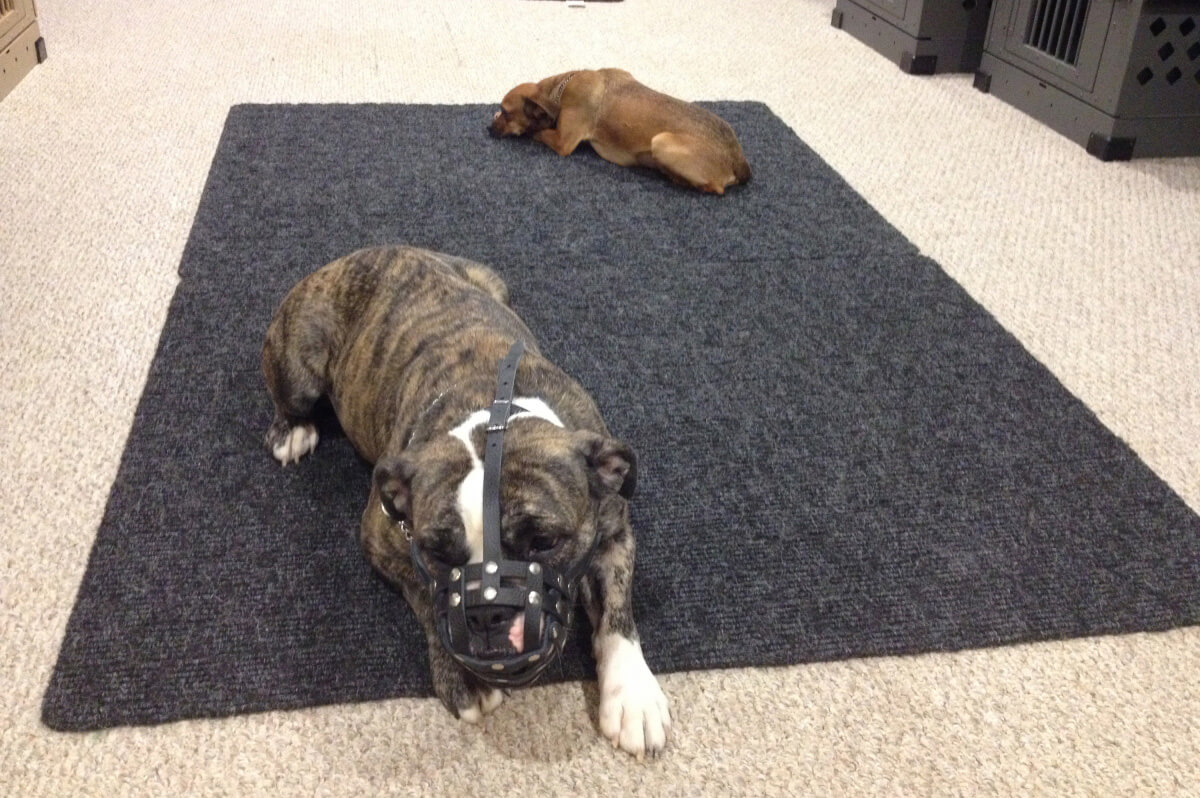
When Cujo Sez 'No' …
Some dogs are easy. Sorta. You know the type … the dog that wants so much to please you that he/she will do anything you ask. Well, most of the time. Okay, some of the time - as long as there are no cats, dogs, birds, toys, bones, food, people, cars, leaves or butterflies around.
Sound like your dog? Stressful isn't it? Well there's hope. Let's take a look at some reasons your dog might not reliably do what you ask.
Dogs are pack animals, as are we. They live in groups and bond closely with their family or pack. Within the pack or family, there are those that are more dominant and those who are more submissive. At the top of that hierarchy, there's the leader of the pack. The leader of the pack makes all the decisions about where and what the pack will hunt, when and where they will move, and when they will settle down and rest. In addition to making all these decisions for the pack, the leader also takes care to protect the pack and keep order between the members.
The rewards for taking on this responsibility are numerous. They include getting the best parts and first pick of any food, the best and most comfortable sleeping places, the right to be groomed and fussed over. The leader gets to possess anything he wants - bones, toys, food, beds, passageways - anything. All of the other dogs accept this leadership (for the most part) and will give up any of those rewards if the leader demands it - without a fight. The leader also controls proximity between himself and the other dogs. In other words, he never gets jumped on, shoved out of the way, leaned on, stepped on, etc.
So, are you the leader of your pack? If not, why not? Does it matter? Can you become the leader? Will it make a difference? Yes! So how do you become the leader? Thankfully, you can become the leader without violence, bullying, or yelling. In fact, those things are counter-productive. There are much better ways. Your dog will be very easy to train if you become the leader that he looks up to, pays attention to, and respects. See the article "Wanna Lead the Pack? Bullies Need Not Apply" for a discussion about ways to be the leader. Once established in the dog's mind as the leader, you can begin to correct bad behaviors and teach new behaviors.
Does Cujo Know What You Want?
After establishing yourself as leader, the next step in getting the behavior you want is to be sure that your dog knows what you want. This seems an obvious step, but how do you know when your dog knows? Well, the best way to be sure he knows is to teach the behavior, and then practice at least 25 times with minimal distractions. While teaching the behavior, use lots of encouragement, and minimal corrections; if the dog offers a different behavior, just calmly redirect him into the behavior you want. Accept no substitutes. Be consistent and exact in your requirements. Once your dog is doing the behavior reliably in your kitchen (for example), it's time to go outside. Once outside, don't be discouraged if it seems like you have to start all over again. Outside are lots of distractions that you have little control over. Just be calm and repeat the process as you did inside. It shouldn't take nearly as long … but again, a good rule of thumb is 25 repetitions. Remember, be exacting and consistent. Never give up and allow the dog to give you a different behavior than the one you are asking for. Keep a picture of the "finished product" in your mind's eye. Accept no substitutes. Remember to offer lots of enthusiastic praise when the dog gets it right.
Correction!
Now it's time to introduce corrections into the training. The bottom line is that your dog must understand that there are no exceptions; he must do what you ask. There are only a few reasons that your dog might disobey, and principal among them are that he doesn't know what you want (we took care of that with the teaching and distraction phases). Another reason is because something else seems more interesting for whatever reason. This is where corrections come in; you must be willing to issue a correction to your dog that convinces him that you mean business. The correction need not be harsh, so long as it is convincing and well-timed. By learning to "read" your dog thru body language, you will be able to understand his movements and intentions more clearly. For example, you have taught your dog to sit or lie down on command. You give the command and the dog begins to offer a different behavior, or simply ignores you in favor of something else. If your correction is well-timed (as your dog begins to disobey), you will interrupt the intention of the other behavior and remind the dog to pay attention to what you have asked. The thing to avoid is simply allowing the dog to disobey. Now is the time that you must insist that he obey. If you allow disobedience now, you will have a hard time getting reliable obedience far into the future.
Easy enough, huh? Now all you have to do is practice, practice, practice. Find time to practice with your dog for about 10 to 15 minutes two or three times a day. As you practice, your timing will improve as will your ability to 'read' your dog's intentions and body language. You're well on your way to having the "Best Buddy" you've always wanted.
In the next article I'll discuss some different kinds of behaviors, and the appropriate corrections.
Who you are to your dog is everything …
Shawn Hines
~ Jan 27, 2014
